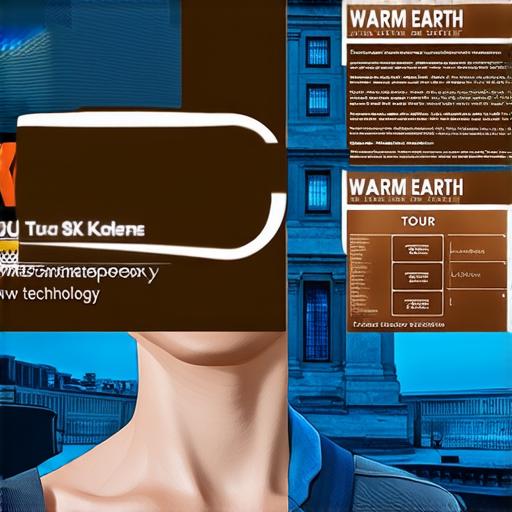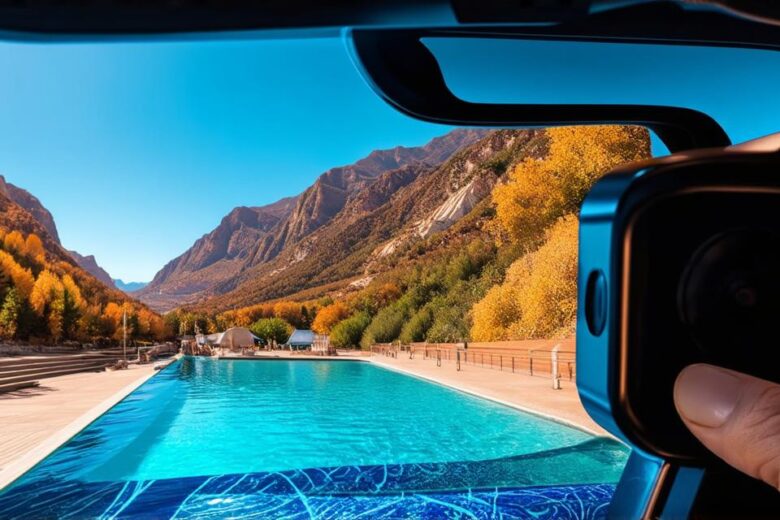What is Augmented Reality?
Augmented reality is a technology that allows virtual objects to be overlaid onto the real world. This creates an immersive experience for users, allowing them to see things in a new way and providing additional context and information about their surroundings. In the tourism industry, AR is being used to create interactive experiences for visitors, helping them to better understand and appreciate the sights they are seeing.
AR in Tourism: A Case Study
One of the most well-known examples of AR in tourism is the use of apps like Pokémon Go. This app uses AR technology to create a scavenger hunt for users, who must explore their surroundings and find virtual creatures hidden in various locations. While not specifically designed for tourism, this app demonstrates how AR can be used to create an engaging experience that encourages visitors to explore new places.
Another example of AR in tourism is the use of guided tours. Many cities now offer augmented reality guided tours, which allow visitors to see sites and landmarks through the lens of their smartphones. These tours often include additional information about each location, providing visitors with a deeper understanding of the history and significance of the site.
AR can also be used to create immersive experiences for visitors. For example, some museums now offer AR exhibits that allow visitors to see ancient artifacts in 3D and even interact with them. This creates a more engaging and immersive experience for visitors, making it easier for them to understand the history and significance of the objects on display.
The Impact of AR on Tourism
AR has the potential to revolutionize the tourism industry in many ways. For one, it can help to create a more personalized experience for visitors. By providing additional information and context about each location, AR can help visitors better understand the history and significance of the sites they are seeing. This can make their trip more meaningful and enjoyable.
AR can also help to reduce wait times at popular tourist attractions. By allowing visitors to explore these attractions through an app or other digital device, AR can help to distribute visitor traffic throughout the day, reducing the need for long lines.
Additionally, AR can help to promote sustainable tourism. By providing information about local ecosystems and wildlife, AR can help visitors understand how their actions can impact the environment. This can encourage visitors to be more mindful of their behavior while traveling, helping to protect the natural world.
Conclusion
Augmented reality is already having a significant impact on the tourism industry, and its use is only expected to grow in the coming years. From immersive experiences to personalized tours and sustainable travel, AR has the potential to revolutionize how visitors experience and interact with the world around them. As AR technology continues to evolve, it will be exciting to see how the tourism industry adapts and innovates to take advantage of these new tools.
FAQs
What is augmented reality?
Augmented reality is a technology that allows virtual objects to be overlaid onto the real world. This creates an immersive experience for users, allowing them to see things in a new way and providing additional context and information about their surroundings.

How is augmented reality being used in tourism?
Augmented reality is being used in many ways in the tourism industry, including interactive experiences, guided tours, and immersive exhibits. It can help to create a more personalized experience for visitors, reduce wait times at popular attractions, and promote sustainable travel.
What are some examples of AR in tourism?
Some examples of AR in tourism include the use of apps like Pokémon Go, guided tours that allow visitors to explore sites through their smartphones, and immersive exhibits that allow visitors to see ancient artifacts in 3D.
What is the potential impact of AR on tourism?
The potential impact of AR on tourism is significant. It can help to create a more personalized experience for visitors, reduce wait times at popular attractions, and promote sustainable travel. As AR technology continues to evolve, it will be exciting to see how the tourism industry adapts and innovates to take advantage of these new tools.
